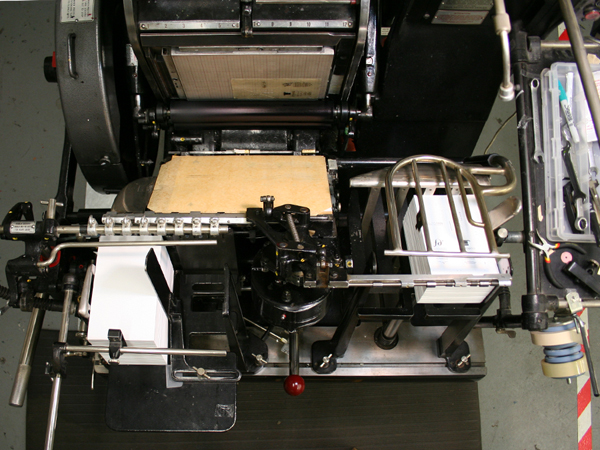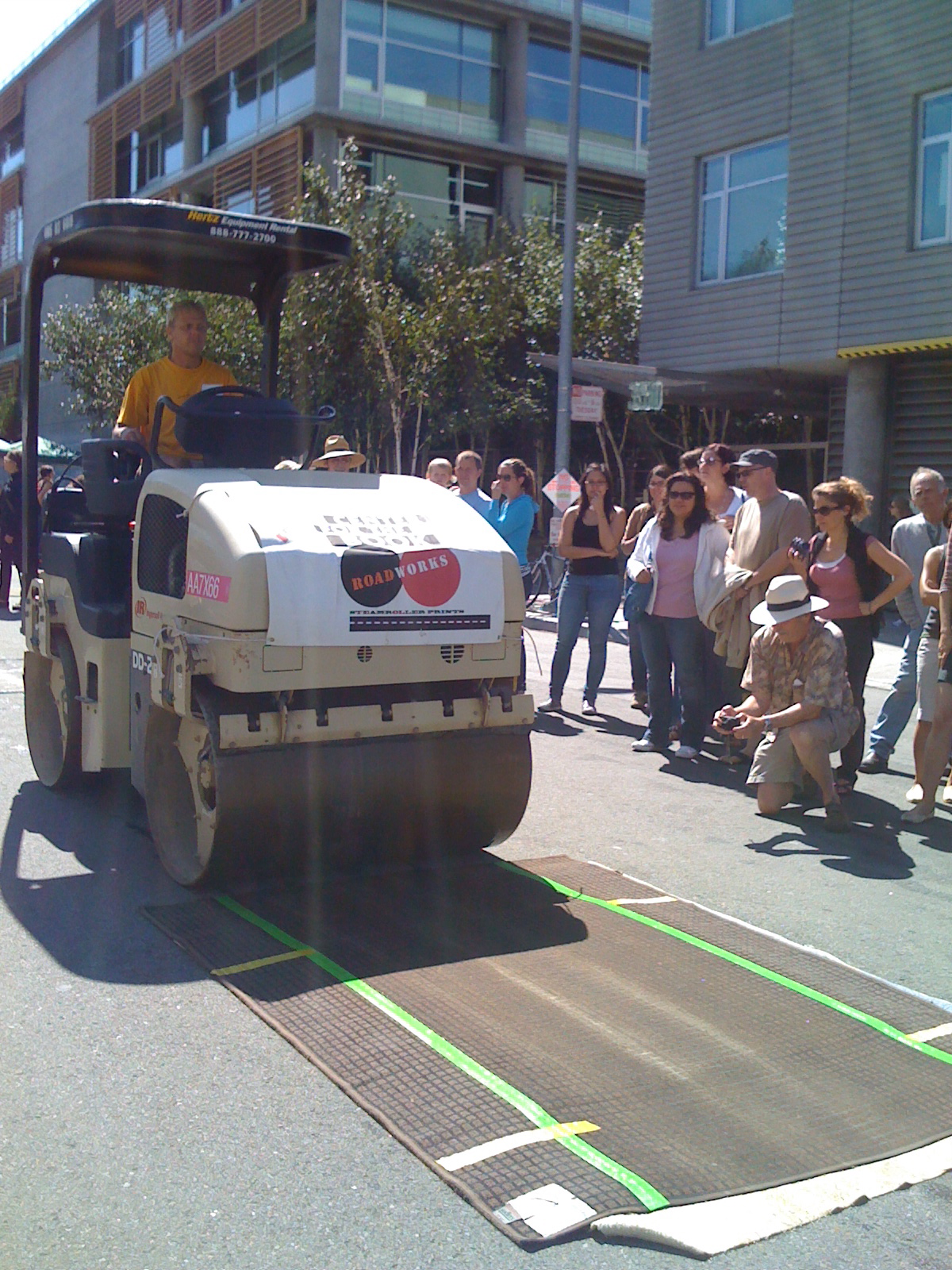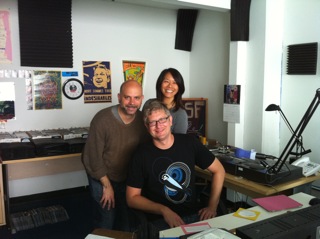
Our Fortunes All Lined Up and Ready to Go.
Poetry and Letterpress!
It was good to be back at the
San Francisco Center for the Book, starting a Poetry and Letterpress printing workshop taught by the crack team of
Dan Bellm and
Lisa Rappoport. I had taken letterpress printing classes before, including one where I made poetry coasters on their tabletop Platen presses, but this was the first time the center has offered a combined class for writing and printing. A match made in heaven, oh yes!
First off, Lisa and Dan reviewed the course schedule and we introduced ourselves. There are six poet/printers, all women, with varying degrees of experience in writing and/or printing and graphic design. We were all excited and a bit scared at the prospect of writing and creating a chapbook. The word “disoriented” was used quite a lot during the introductions!
Then Lisa gave us a tour of our new best friend (fiend?), the
Vandercook Press. We had each sent a line of a poem to her before the class and she set the type and arranged it on the press bed before we arrived. The assignment was to write a line that you would find in a fortune cookie or horoscope and we were all eager to see how our collaborative poem turned out. Each of us got to run five copies of the broadside, which Lisa had chosen to print in a beautiful blue ink.

Lisa Rappoport and Dan Bellm in Action.
Some of us had never used a press before and had to get a feel for the motion of the press. It had been a long time since I’d done any printing, so the review was most welcome! First, you have to press a foot pedal in order to insert the paper along the guides of the impression cylinder, then turn the handle with one hand while holding the paper gently with the other until the drum rolls it over the type, all the while walking alongside the press and lifting the printed sheet off the impression cylinder at the end of the press bed. Sound easy?–I almost crashed the cylinder at the end of the run on my first try! Oops–don’t know me own strength, I guess!
Some of the letters weren’t printing completely, which is pretty typical for a first try, since old metal type gets worn down over years of use. Fonts made by different foundries also vary in how much pressure they need in order to print cleanly and Lisa added several sheets of paper to the impression cylinder to properly adjust the level of the printing surface. Such is the life of a printer! For printing groupies like me, here are the fonts that were used in the broadside:
Text: 18pt Cochin Light Italic
Colophon/Blurb: 12pt Cochin Light Italic & Roman
Title: Wood type
Lisa then added some red to the blue ink to make a deep purple for the second color of the broadside, and spent considerable time removing the text type and setting the title and graphics. We had a chance to peruse the variety of chapbooks Lisa had brought for us to see–I was in love with a tiny square chapbook titled “Rayon Vert,” that featured letterpressed interior type and a beautiful graphic of a human heart printed on green vellum. Maybe one day I’ll be able to make something so gorgeous!
When the title was ready to go, we all stepped up for our second round of printing. The finished broadside was fun and had a retro feel and we marveled at how cool the poem turned out since none of us knew what anyone else was going to write. “Those Surrealists were really on to something when they made up their parlor games (the Exquisite Corpse),” Dan observed. We had to agree–even though everyone sent in their writing blind, several of the lines in the poem invoked the sky in some way. This poem wrote itself, even over email! I had actually written a whole page of lines, but chose this one to send in: “The cock-eyed universe loves a comet, its visionary jewelry.” When I looked at what the rest of the lines I could have sent, I was amazed to see that that the one I sent fit the best. And Lisa included a cute retro graphic of a comet streaking across the page too. You can read the whole poem and get a better look at the broadside by clicking on the picture below.

Fortune: A Collaborative Poem.
Because it took a bit longer to print the broadside than we’d thought (ain’t that always the way?), Lisa kindly offered to clean the press so we could do some free writing exercises that Dan had planned. For the next hour, we wrote about rooms we had stayed in, things we had overheard that day, things we had lost, and what we were afraid of. I was happy just to be writing, though I couldn’t say anything I was doing looked remotely like poetry. Dan then had us look over our exercises and underline anything that caught our attention or looked interesting. One thing I underlined was the line, “If we can’t get a fucking cup of coffee in 23 minutes, I’ll pay your parking ticket!” which I swear I had just heard that day on Gough Street, near Hayes Valley. My guess was that the four guys getting out of a silver sedan were going to go to the
Blue Bottle Kiosk on Linden Street. That’s where I would go–ummmm.
For the last exercise of the evening, Dan asked us to write a letter to ourselves, either using the material from the free writes or not. I did, and was pleasantly surprised to feel the disparate material I had underlined create an associative emotional tone through its illogical narrative. Afterwards a few people read their poem-letters and it was cool to see how different each one was–some were more traditional (and coherent) than mine, others very humorous or philosophical.
Then it was time to gather our fresh-off-the-press poetry and head home. Thanks to Paula, Jennifer, Catherine, Karen, Judy and Leigh for their poetry–and to Dan and Lisa for a terrific first class! I’m really looking forward to working with everyone at the next one and I hope to post blogs after each class so people can see the process of making a chapbook on a letterpress printer!

Our beloved Vandercook, ready to roll.













